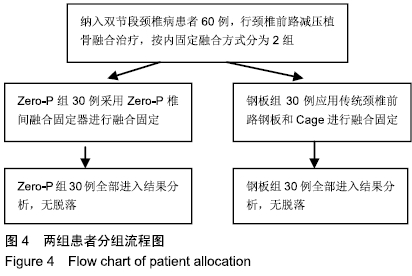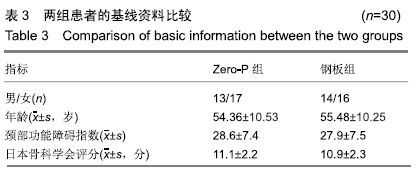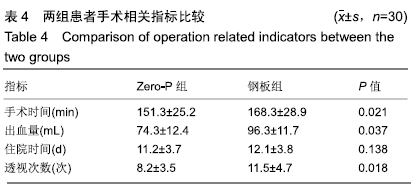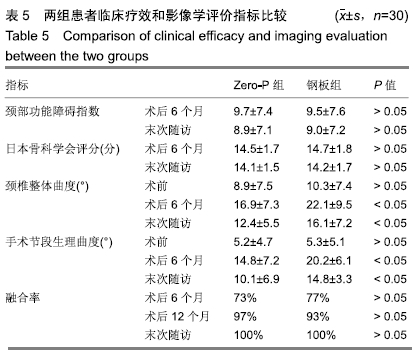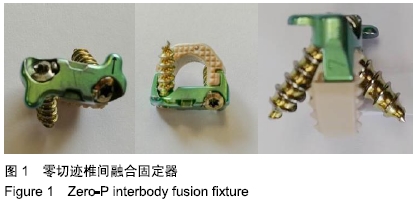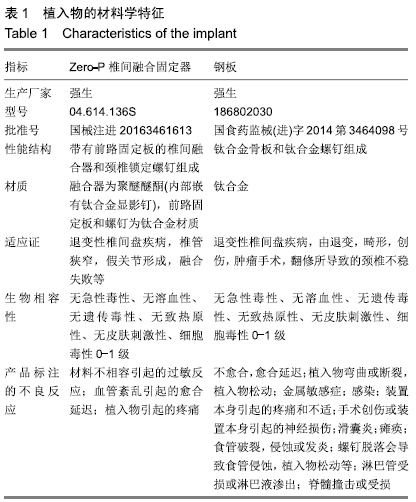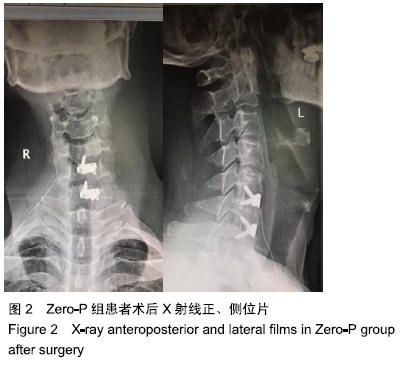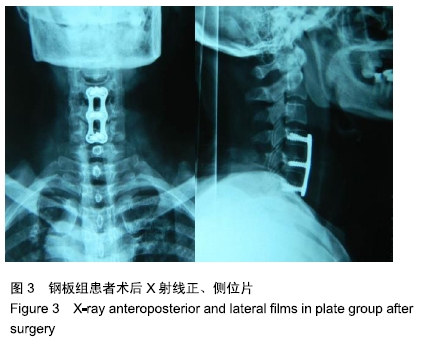中国组织工程研究 ›› 2020, Vol. 24 ›› Issue (9): 1342-1347.doi: 10.3969/j.issn.2095-4344.2490
• 脊柱植入物 spinal implant • 上一篇 下一篇
零切迹椎间融合固定器与传统颈前路钢板Cage融合内固定治疗双节段颈椎病的比较
余 彬,彭银虓,薛 力,秦 辉,梁益建
- 成都市第三人民医院,四川省成都市 610000
Comparison between anterior cervical discectomy and fusion using Zero-P and traditional anterior cervical plate plus cage for treating two-level cervical spondylosis
Yu Bin, Peng Yinxiao, Xue Li, Qin Hui, Liang Yijian
- Chengdu Third People’s Hospital, Chengdu 610000, Sichuan Province, China
摘要:
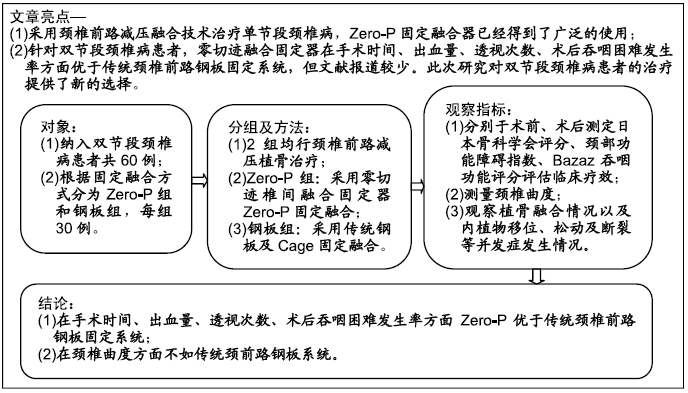
文题释义:
零切迹椎间融合固定器:放入椎间隙内的融合器带斜向螺钉孔,通过孔置入螺钉可固定相邻椎体,且螺钉尾部沉入融合器内,椎体前方无内植物外露。
传统颈椎前路钢板及Cage:前路行手术治疗减压患者椎间隙后,处理上下终板,于椎间隙内放入预填充骨块的Cage,于椎体前方安放钢板螺钉固定相邻椎体。
背景:颈前路减压植骨融合是治疗颈椎病的一种经典手术方式,目前可选择零切迹椎间融合固定器与传统颈前路钢板、Cage作为内固定融合材料。与传统颈前路钢板固定系统相比,零切迹椎间融合固定器具有术后对食管干扰小、降低术后吞咽困难发生率、避免钢板过长或位置不佳损伤临近节段椎间盘等优势。
目的:比较零切迹椎间融合固定器Zero-P与传统颈前路钢板Cage融合内固定治疗双节段颈椎病的安全性和有效性。
方法:回顾性分析成都市第三人民医院2016年5月至2018年5月行颈椎前路减压植骨治疗的60例双节段颈椎病患者的临床资料,根据融合方式分为2组,Zero-P组采用Zero-P融合固定,钢板组采用颈椎前路钢板固定联合Cage置入,每组30例。2组患者对治疗方案均知情同意,且得到医院伦理委员会批准。采用日本骨科学会评分、颈部功能障碍指数、Bazaz吞咽功能评分评估临床疗效;行颈椎X射线、颈椎CT检查,测量颈椎曲度,观察植骨融合情况以及内植物移位、松动及断裂等并发症发生情况。
结果与结论:①60例患者均顺利完成手术,术后伤口均Ⅰ期愈合,无神经损伤、食管瘘、脑脊液漏等严重并发症发生;②在术后随访中,2组患者颈部功能障碍指数及日本骨科学会评分、植骨融合率差异均无显著性意义(P > 0.05);③Zero-P组患者吞咽困难发生率和严重程度在术后各随访时间点均低于钢板组(P均< 0.05);④术后6个月及末次随访,钢板组患者在颈椎整体曲度和手术节段曲度方面均优于Zero-P(P < 0.05);⑤提示双节段Zero-P椎间融合是一种安全有效的治疗方式,在手术时间、出血量、透视次数、术后吞咽困难发生率方面均优于传统颈椎前路钢板固定系统,但在颈椎曲度方面不如传统颈前路钢板系统。术前颈椎曲度明显异常的患者不推荐使用Zero-P椎间融合固定器作为内固定器械。
ORCID: 0000-0003-3584-5276(余彬)
中国组织工程研究杂志出版内容重点:人工关节;骨植入物;脊柱;骨折;内固定;数字化骨科;组织工程
中图分类号:
